#bioplastics
Text
Considering i havent posted on my main crafts account but i have a lot to say i will do a mini post with a few things ive done recently:

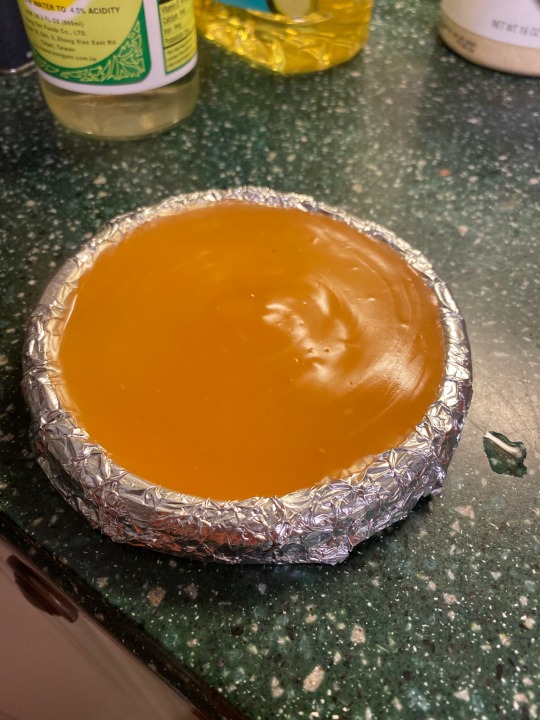
Most recently (like, today) corn starch/glycerine/vinegar bioplastics (+yellow onion skin dye for the orange, not yet set fully) Should be good to take out of the plates in like 8 or so days
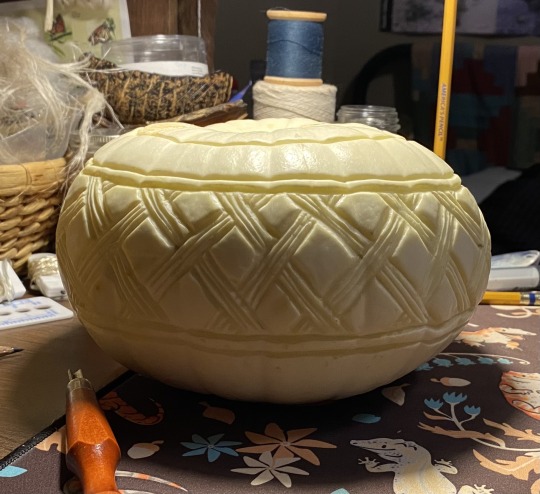
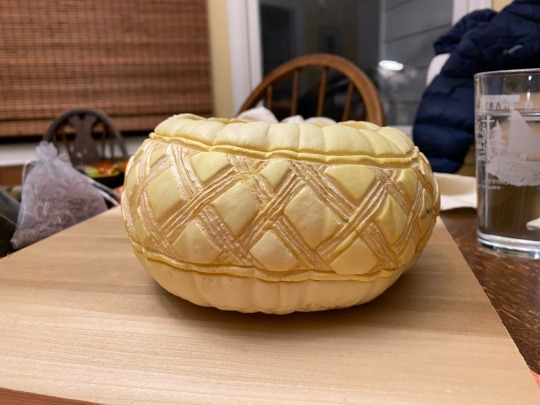
WIP drying pumpkin out to hopefully make a patterned container, found a pumpkin someone had thrown on the sode of the road and carved a design into it/emptied it out
i'm *hoping* packing it with salt will let it drain of enough water like the last pumpkin i made this way. I think i might not have thinned the walls enough and it'll take a while to dry before i can test this guess

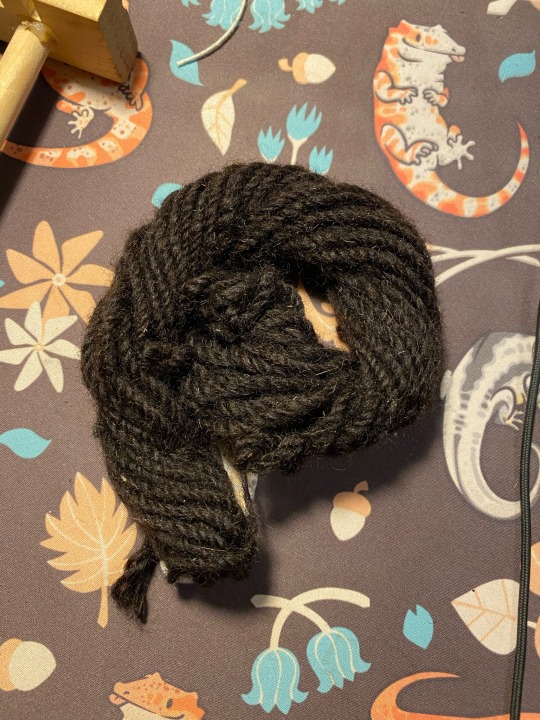
Spun yarn (raw wool washed using saponins extracted from lambsquarters/goosefoot seed coatings)
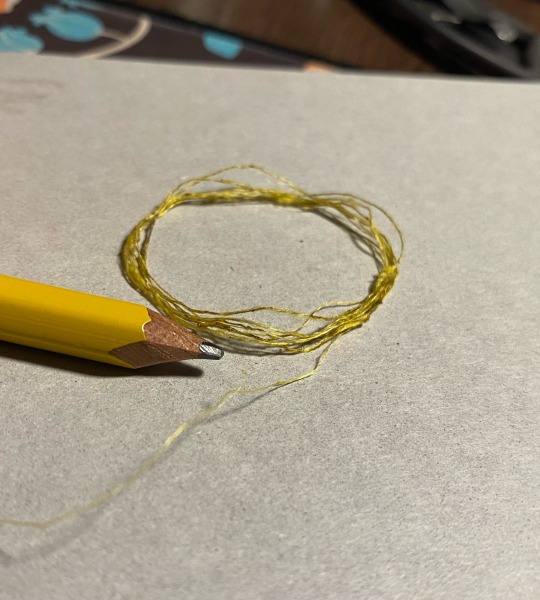
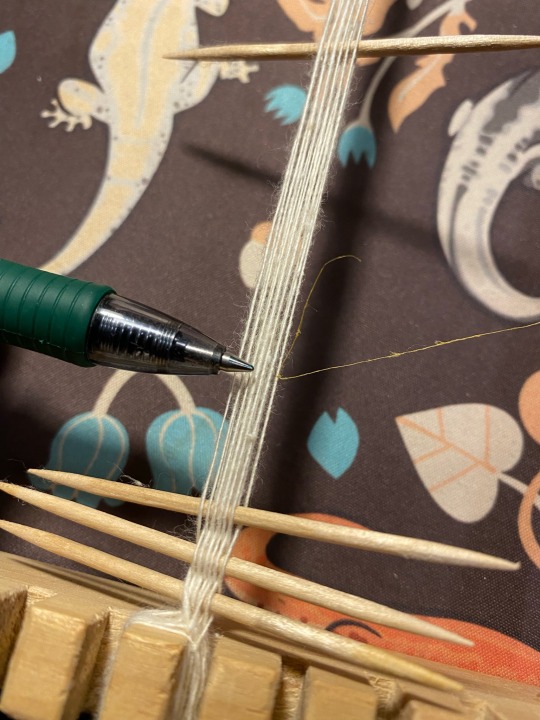
SPIDER SILK plus beginnings of a very tiny weaving attempt again with them; i think it's too tiny for the warp though


A small sampling of plant pigments (usually anthocyanins) i've tried working with recently (mostly mixed with water, some egg tempura experimenting as well)
Hoping that posting this will kickstart my brain to post more about these specific things with even more detailed observations soon
(particularly the anthocyanins)
209 notes
·
View notes
Text
What if there was plastic-like material that could absorb excess nutrients from water and be used as a fertilizer when it decomposes? That product—a "bioplastic" material—has been created by University of Saskatchewan (USask) chemistry professor Dr. Lee Wilson and his research team, as detailed in a paper recently published in RSC Sustainability. The research team includes Ph.D. candidate Bernd G. K. Steiger, BSc student Nam Bui and postdoctoral fellow trainee Bolanle M. Babalola.
"We've made a bioplastic material that functions as an absorbent and it takes phosphate out of water, where elevated levels of phosphate in surface water is a huge global water security issue," he said. "You can harvest those pellets and distribute them as an agricultural fertilizer."
Continue Reading.
99 notes
·
View notes
Text
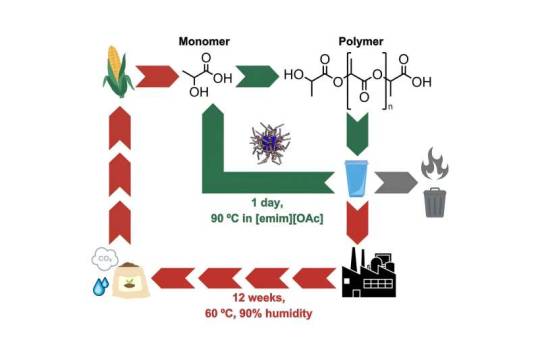
An enzyme used in laundry detergent can recycle single-use plastics within 24 hours
Scientists at King's College London have developed an innovative solution for recycling single-use bioplastics commonly used in disposable items such as coffee cups and food containers.
The novel method of chemical recycling, published in Cell Reports Physical Science, uses enzymes typically found in biological laundry detergents to "depolymerize"—or break down—landfill-bound bioplastics. Rapidly converting the items into soluble fragments within just 24 hours, the process achieves full degradation of the bioplastic polylactic acid (PLA). The approach is 84 times faster than the 12-week-long industrial composting process used for recycling bioplastic materials.
This discovery offers a widespread recycling solution for single-use PLA plastics, as the team of chemists at King's found that in a further 24 hours at a temperature of 90°C, the bioplastics break down into their chemical building blocks. Once converted into monomers—single molecules—the materials can be turned into equally high-quality plastic for multiple reuse.
Read more.
#Materials Science#Science#Enzymes#Plastics#Polymers#Recycling#King's College London#Bioplastics#Biomaterials#Polylactic acid
55 notes
·
View notes
Text

#data soong#lal soong#soong family#data star trek#st tng#star trek the next generation#androids#lt commander data#star trek tng#bioplastics#cybernetics#positronic#father and child
102 notes
·
View notes
Text
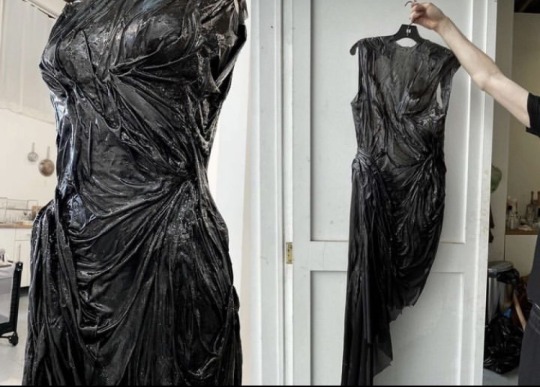
bioplastic fashion by elenavelez x carolinezimbalist
#fashion#deconstructed#soft grunge#upcycle#goth#bioplastics#elena velez#nymphzero#trashbag chic#sculpture
117 notes
·
View notes
Text
I made bioplastic (recipe from here) using tonic water as the liquid and made UV fluorescent charms and stuff for an upcoming art project. I want to explore a bunch of naturally fluorescent substrates, like GFP and quinine and riboflavin.
10 notes
·
View notes
Photo

for you (PANES VII - VIII)
3 notes
·
View notes
Text

Plant-based oils in the chemical industry offers a sustainable solution to reduce our dependence on finite resources and tackle environmental issues. Check out this insightful article on the benefits and challenges of this transition.
Read More
#plantbasedoils#chemicalindustry#sustainability#environment#bioplastics#lubricants#polyurethane#renewableresources#greenalternatives#efficiency#climatechange#cleanenergy#sustainablefuture#greenliving#renewableenergy#ecofriendly#zerowaste#recycling#turtletimeline
3 notes
·
View notes
Text
2 notes
·
View notes
Text
Non-Biodegradable Plastics to Lead Bioplastics & Biopolymers Market During Forecast Period
Non-Biodegradable Plastics to Lead Bioplastics & Biopolymers Market During Forecast Period
In recent years, there has been a growing awareness that the use of non-biodegradable plastics is leading to large amounts of plastic waste accumulating in landfills and oceans. Recognizing the need to find new ways to recycle and reduce the use of these harmful materials, researchers have been working on finding alternatives to conventional plastics.
In this article, we will explore three types…
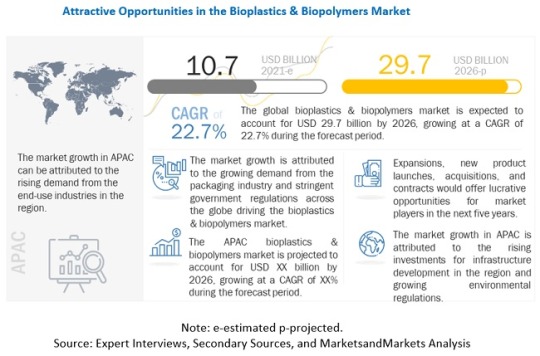
View On WordPress
#bioplastics#Bioplastics & Biopolymers Market#biopolymer#chemical and material#chemical market reports
2 notes
·
View notes
Link
Plastics, now ubiquitous in the modern world, have become a rising threat to human and environmental health. Around the planet, evidence of plastic pollution stretches from grocery bags in the deep sea to microplastics in our food supplies and even in our blood.
Seeking solutions to counteract the rise in plastic trash, scientists at the University of California San Diego have developed new biodegradable materials that are designed to replace conventionally used plastic. After proving their polyurethane foams biodegrade in land-based composts, an interdisciplinary team of scientists including UC San Diego biologist Stephen Mayfield and chemists Michael Burkart and Robert "Skip" Pomeroy have now shown that the material biodegrades in seawater. The results are published in the journal Science of the Total Environment.
Continue Reading.
314 notes
·
View notes
Photo

Steel mill gases transformed into bioplastic
Plastic waste from food deliveries is rapidly polluting the environment. An alternative that has emerged is bioplastic, which is also called biodegradable plastic. Bioplastic that uses eco-friendly raw materials emits less pollutants during the production process and has natural decomposition properties. Recently, a Korea-Spain joint research team recreated bioplastic from waste byproducts from gas fermentation from steel mills.
Through joint research with Spain's Center for Research in Agricultural Genomics (CRAG), a research team led by Professor Gyoo Yeol Jung, Ph.D. candidates Dae-yeol Ye and Jo Hyun Moon, and Dr. Myung Hyun Noh in the Department of Chemical Engineering at POSTECH has developed a technology to generate artificial enzymes from E. coli. The joint research then succeeded in mass-producing itaconic acid, a source material for bioplastic, from acetic acid in E. coli. This study is published in Nature Communications.
Itaconic acid produced by fungi with membrane-enclosed organelles is used as a raw material for various plastics, as well as cosmetics and antibacterial agents. Although its global market value is estimated high at around 130 billion KRW (USD$91 million) this year, its production and utilization have been limited due to the complex production process and high cost of production.
Read more.
183 notes
·
View notes
Text

#lore star trek#lore tng#lore soong#positronic#star trek the next generation#st tng#hands#bionic hand#cybernetics#white skin#circuitry#bratty disaster android#soong type android murder edition#lt commander data#descent star trek#gold gold gold#star trek tng#circuit board#bioplastics
40 notes
·
View notes
Text

elena velez fall 2023 detail via the model’s ig
55 notes
·
View notes

